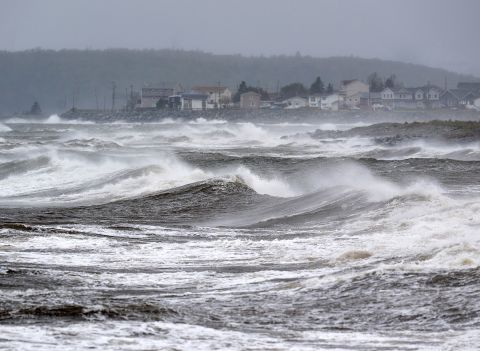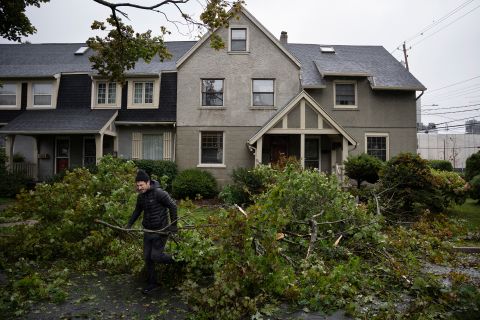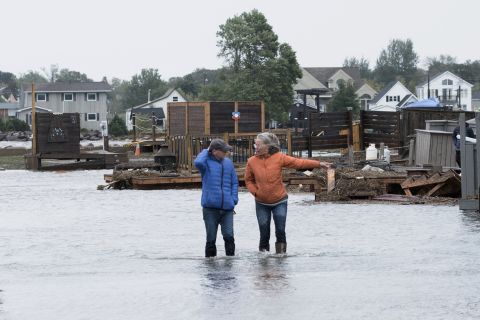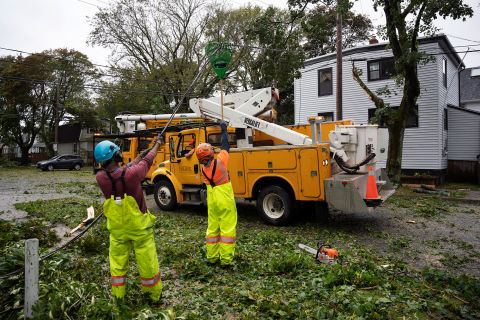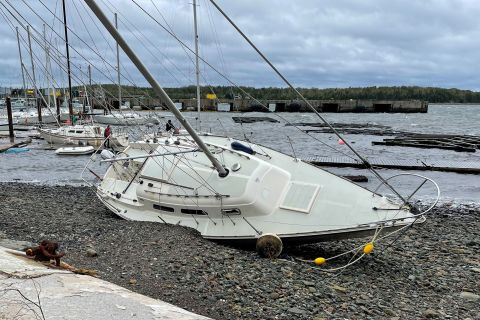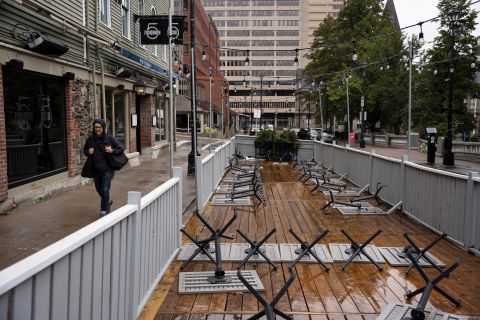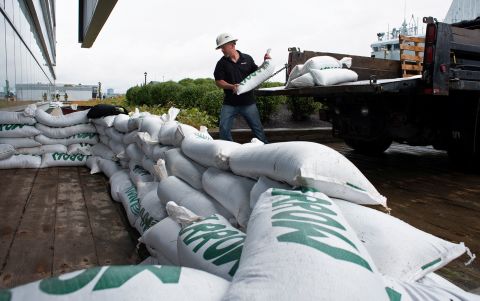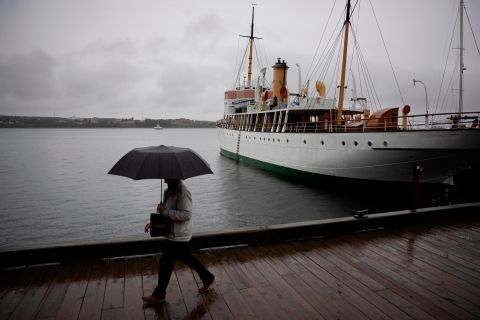CNN
—
The storm named Fiona slammed into Canada’s eastern seaboard with hurricane-force winds and torrential rainfall Saturday, pulling buildings into the ocean, collapsing homes, toppling trees and knocking out power for hundreds of thousands of people.
Fiona first wreaked havoc in the Caribbean as a hurricane before moving up the Atlantic and making landfall again as a post-tropical cyclone. The storm ripped a path of destruction in Nova Scotia, New Brunswick, Prince Edward Island and Newfoundland before weakening and moving out to sea Sunday.
The remnants of Fiona were expected to continue to bring tropical storm-force winds, large waves and 1 to 2 inches of rain to portions of Atlantic Canada through early Sunday.
Now, officials are beginning to account for the damage brought forth to the region.
Nova Scotia, where Fiona first made landfall during the early morning hours Saturday, was hit hard by the storm. Powerful winds toppled “an incredible amount” of trees and power lines, washed out roads, littered neighborhoods with debris, and in many cases, snapped whole power poles in half, Premier Tim Houston said.
“It will take time for Nova Scotia to recover,” he said, reporting “devastating” damage.
Canadian Prime Minister Justin Trudeau said Saturday that the government approved Nova Scotia’s request for federal assistance and that Canadian Armed Forces will be deployed to help out in the region. The Prime Minister said residents lived through a “terrifying” 12 hours Saturday.
“People have seen their homes washed away, seen the winds rip schools’ roofs off,” Trudeau said. “And as Canadians, as we always do in times of difficulty, we will be there for each other.”
In Prince Edward Island’s Charlottetown, police shared images of downed power lines over buildings, fallen trees blocking roadways and piercing through structures. The region’s utility, Maritime Electric, said it was concerned about people out walking and driving on streets where there is widespread damage from downed power lines and possible live wires.
Several provinces were impacted by the heavy winds and rain, but none more than Nova Scotia. As of Sunday morning, about 370,000 customers were still without power early Sunday across Nova Scotia, Prince Edward Island and New Brunswick – including about 268,000 in Nova Scotia, according to Poweroutage.com.
Nearly three quarters of Nova Scotia lost electricity as Fiona pushed through, Houston said Saturday. Peak wind gusts of 171 km/h (106 mph) were recorded in the province’s town of Arisaig Saturday. Meanwhile, Wreckhouse in Newfoundland saw 170 km/h (105 mph) gusts.
Poor weather conditions have hampered power restoration efforts, Nova Scotia Power President and CEO Peter Gregg said Saturday. More than 900 power technicians were on their way to the area, but some customers may experience power outages for several days, he said.
Drone video shows 50-foot waves and 100 mph winds inside Hurricane Fiona
In Nova Scotia’s capital, Halifax, strong winds uprooted trees and downed power lines, sending sparks flying and lights flickering off.
A Halifax apartment complex’s roof collapsed, forcing about 100 people to leave for a shelter, Mayor Mike Savage told CNN Saturday.
“The magnitude of this storm has been breathtaking,” Savage later said at a Saturday news conference. “It turned out to be everything predicted.”
Osborne Head in Nova Scotia received 192 mm (7.55 inches) of rain and Crowe Brook in New Brunswick got 107 mm (4.2 inches), among other heavy rainfall amounts across the provinces.

In Newfoundland, video showed buildings floating in water and submerged cars under heavy rains. A woman was rescued from the water after her house collapsed, according to the Royal Canadian Mounted Police. She was taken to a hospital; the extent of her injuries wasn’t immediately known, police said.
Port aux Basques, a town at the southwest tip of Newfoundland, was also one of the worst-hit areas, Trudeau said Saturday.
“We’re seeing devastating images coming out of Port aux Basques,” he said. “Obviously as we see the images of houses falling into the sea, of waves destroying property and buildings, our first thought needs to be for people.”
First responders there were dealing with multiple electrical fires, residential flooding and washouts.
“We’ve got a total war zone here, we’ve got destruction everywhere,” Port aux Basques Mayor Brian Button said in a video update, warning that more storm surges are expected.
Port aux Basques is now under a boil water order, and power was still out for many residents. Concrete barriers were also set up around areas that were rendered “danger zones” by the storm, the mayor said.
The Port aux Basques tide gauge recorded a maximum total water level of 2.73 meters (8.96 feet) – topping its previous record of 2.71 (8.89 feet) meters set in 2017, according to the Canadian Hurricane Centre.

